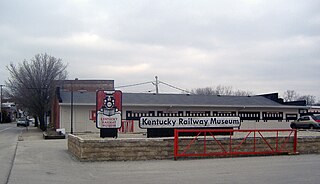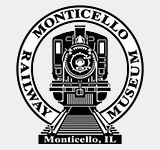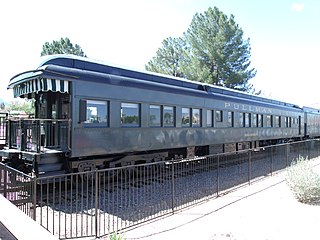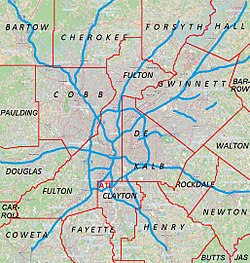
The Seaboard Air Line Railroad, which styled itself as "The Route of Courteous Service", was an American railroad which existed from April 14, 1900, until July 1, 1967, when it merged with the Atlantic Coast Line Railroad, its longtime rival, to form the Seaboard Coast Line Railroad. Predecessor railroads dated from the 1830s and reorganized extensively to rebuild after the American Civil War. The company was headquartered in Norfolk, Virginia, until 1958, when its main offices were relocated to Richmond, Virginia. The Seaboard Air Line Railway Building in Norfolk's historic Freemason District still stands and has been converted into apartments.

The Tennessee Valley Railroad Museum is a railroad museum and heritage railroad in Chattanooga, Tennessee.

The Oahu Railway and Land Company, or OR&L, was a 3 ft narrow gauge common carrier railway that served much of the Hawaiian island of Oahu, and was the largest narrow gauge class one common carrier in the U.S, until its dissolution in 1947.

The Arizona Railway Museum is a railroad museum located in Chandler, Arizona.

The Central of Georgia Railway started as the Central Rail Road and Canal Company in 1833. As a way to better attract investment capital, the railroad changed its name to Central Rail Road and Banking Company of Georgia. This railroad was constructed to join the Macon and Western Railroad at Macon, Georgia, in the United States, and run to Savannah. This created a rail link from Chattanooga, on the Tennessee River, to seaports on the Atlantic Ocean. It took from 1837 to 1843 to build the railroad from Savannah to the eastern bank of the Ocmulgee River at Macon; a bridge into the city was not built until 1851.

The Kentucky Railway Museum, now located in New Haven, Kentucky, United States, is a non-profit railroad museum dedicated to educating the public regarding the history and heritage of Kentucky's railroads and the people who built them. Originally created in 1954 in Louisville, Kentucky, the museum is at its third location, in extreme southern Nelson County. It is one of the oldest railroad stations in the United States.

The Ferdinand Magellan is a former Pullman Company observation car that served as Presidential Rail Car, U.S. Number 1 from 1943 until 1958. It is named after the Portuguese explorer. The current owner, Gold Coast Railroad Museum in Miami-Dade County, Florida, acquired it in 1959. The Ferdinand Magellan was designated a National Historic Landmark by the United States Department of the Interior, National Park Service on February 4, 1985.

The Abraham Lincoln, also known as Denver and Rio Grande Western Railroad Business Car No. 101, is the oldest operable passenger car in the United States allowed to run on tracks operated by Amtrak. It is listed on the National Register of Historic Places.

The Slumbercoach is an 85-foot-long, 24 single room, eight double room streamlined sleeping car. Built in 1956 by the Budd Company for the Chicago, Burlington and Quincy Railroad for service on the Denver Zephyr, subsequent orders were placed in 1958 and 1959 by the Baltimore and Ohio Railroad and Missouri Pacific Railroad for the Texas Eagle/National Limited, then in 1959 by the Northern Pacific Railway for its North Coast Limited and also the New York Central Railroad for use on the 20th Century Limited.

The Monticello Railway Museum is a non-profit railroad museum located in Monticello, Illinois, about 18 miles west of Champaign, IL. It is home to over 100 pieces of railroad equipment, including several restored diesel locomotives and cars.

Pullman National Historical Park is a historic district now located in Chicago, which in the 19th century was the first model, planned industrial community in the United States. The district had its origins in the manufacturing plans and organization of the Pullman Company and became one of the most well-known company towns in the United States, as well as the scene of the violent 1894 Pullman strike. It was built for George Pullman as a place to produce the famous Pullman railroad-sleeping cars.
The Louisville and Nashville Depot is an historic Louisville and Nashville Railroad depot located at 206 Henry Street in Milton, Santa Rosa County, Florida. It was built in 1909 on the site of the former Pensacola and Atlantic depot built in 1882 which burned down in 1907. In 1973, the station was closed, but partially restored with a 1976 Bicentennial grant.

The Historic Railpark and Train Museum, formerly the Louisville and Nashville Railroad Station in Bowling Green, Kentucky, is located in the historic railroad station. The building was placed on the National Register of Historic Places on December 18, 1979. Opened in 1925, the standing depot is the third Louisville & Nashville Railroad depot that served Bowling Green.

Louisville & Nashville 152 is a preserved K-2a class 4-6-2 "Pacific" type steam locomotive listed on the National Register of Historic Places, currently homed at the Kentucky Railway Museum at New Haven, Kentucky in southernmost Nelson County, Kentucky. It is the oldest known remaining 4-6-2 "Pacific" type locomotive to exist. It is also the "Official State Locomotive of Kentucky", designated as such on March 6, 2000. The locomotive is currently owned and being restored back to operating condition by the Kentucky Railway Museum.
The Frankfort and Cincinnati Model 55 Rail Car is a historic railcar on the National Register of Historic Places. The railcar currently resides at the Kentucky Railway Museum in New Haven, Nelson County, Kentucky.

The Southeastern Railway Museum is a railroad museum located in Duluth, Georgia, in suburban Atlanta.

The Harding Railroad Car is a historically significant Pullman railroad passenger car located at Pioneer Park in Fairbanks, Alaska. Also called Denali, and designated with equipment number X-336 by the Alaska Railroad, the car was one of three used to carry a delegation that included President Warren G. Harding in 1923 to the Mears Memorial Bridge for a ceremony marking completion of the railroad between Fairbanks and Seward. The car was purchased by the Alaska Railroad in 1923 from the Great Northern Railroad, and was used in its service until 1945. At the urging of the Fairbanks "igloo" (chapter) of the Pioneers of Alaska, the car was restored in 1959–60 and given to the city of Fairbanks. It was placed in Alaskaland in 1967, created to mark the centennial of the Alaska Purchase. It was used for some years as the park's visitor center.

Named after the Norwegian explorer, the Roald Amundsen is a former Pullman Company private car; the last of seven Explorer-series cars built between 1927 and 1929 for the Pullman Company's pool of passenger cars. It was frequently used as the United States Presidential Rail Car, and was used for every president from Herbert Hoover through Dwight Eisenhower.



















